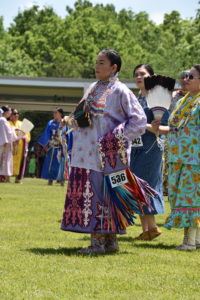As we join, learn and participate in our community’s rich variety of culture,
below is a list that will help to inform your visit to this beautiful and
important event:
- The correct term for a dancer’s outfit is regalia – not costume. Never touch a dancer’s
regalia, feathers or hair. Many of the ornaments have religious meaning and are cherished family heirlooms. - Ask permission before taking photos of dancers in regalia. If the photo is for publication or commercial use, this should be explained before the photo is taken.
- If you see a lost or dropped feather, do NOT pick it up. Notify the nearest staff member.
- Pointing with the fingers is considered poor manners by some tribes. If you must point,
use your head and nod in the direction you wish to indicate.
There are over 500 Nations which make up Indian Country, with each tribe creating its own interpretation of regalia and dance styles. Some of the elaborate pieces you will see tonight have been passed down through generations. The making of pow-wow regalia is an art form all its own and is one of the most powerful symbols of a dancer’s identity. Similarly, the songs you will hear may have been passed down through generations. Read more about each dance below:
Men’s Traditional: This is one of the oldest dance styles, often “animal” in nature. There are many variations included in the traditional style, representing different regions (Northern, Southern, etc.). Movements generally represent that of a hunter/gatherer or are action oriented, such as battling an enemy. Watch a video example here.
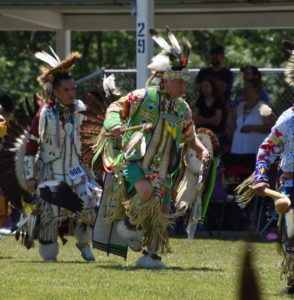
Men’s Grass Style: This is considered a “traditional” style of dance. Men usually wear an outfit of long fringes made of yarn, leather, ribbons or some sort of fiber (not feathers) and the smooth movements of the dance tell a story to mimic the movements of tall grass in the wind or to interpret a dancer’s vision of what the song is saying to them. Watch a video example here.
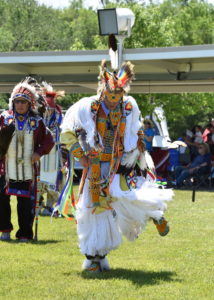
Men’s Chicken Dance: Depicted by the prevalent use of feathers, dancers wear feather bustles on the upper back using vibrant colors to highlight their designs and feather work. Their movements can be distinguished by movements reminiscent of the prairie chicken mating dance. Watch a video example here.
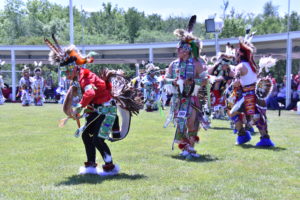
Men’s Fancy: Colorful bustles are worn on the back for this modern dance style. These dancers are athletes and their dance demands a high level of knowledge, songs, movements and stamina. Dancers will often carry a decorated coup stick or mirror. The feathers on their head are supposed to be constantly moving throughout the song. Watch a video example here.
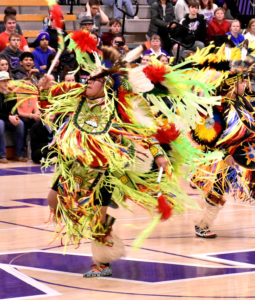
Women’s Shawl or Fancy: This is a more modern dance style which many people say reflect the beating wings of birds or butterflies. There are contemporary and old style fancy shawl dancers. The shawl, worn over the shoulders, shows amazing artwork. The movements are very athletic and can be just as fast as the men’s fancy dance. Watch a video example here.
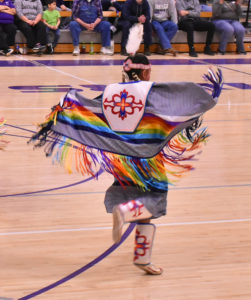
Women’s Jingle: This is the most distinguishable style. Spectators can see and hear the
jingles or rolled metal cones moving against each other making a unique sound. There is a
story about how the jingle dress came to be… “google” it! Watch a video example here.
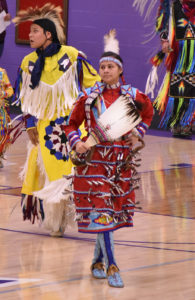
Women’s Traditional: The oldest dance form for the ladies. Women hold themselves tall and proud, with their bodies straight and often dance in a circle pattern. The dance originates at a time when women stood outside the arena and kept time with their feet. Watch a video example here.
